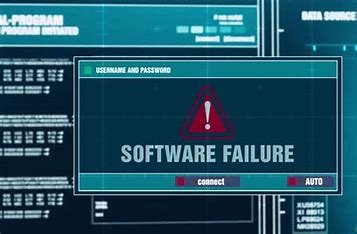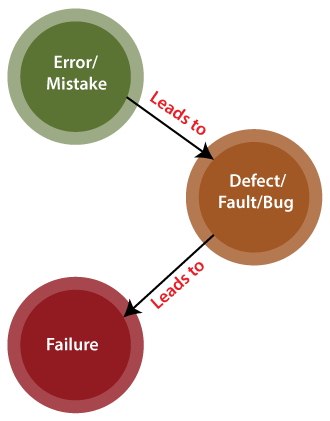Table of Contents
- Title; Unveiling the Causes of Software Failures
- Description
- Overview of software failures
- Some of the common software failure mechanisms are:
- Delving into the concept of boundary errors
- Conclusion
- write the frequently asked question
- 1.How do boundary errors impact software systems?
- 2.How do software systems get affected by errors?
- 3.What are the potential consequences of resource limitation errors?
- 4.How can we. Mitigate mistakes during software development?
- 5.What advantages come with understanding and mitigating failure mechanisms in software?
Title; Unveiling the Causes of Software Failures
Description
In this article we will delve into the reasons, behind software failures. We will discuss their consequences. Offer practical advice on how to prevent and alleviate these issues. By gaining an understanding of these failure mechanisms, developers and businesses can proactively identify, mitigate and avoid risks leading to the development of dependable and robust software systems.

Overview of software failures
Understanding the mechanisms behind software failures is crucial
- Logic Errors
- Understanding logic errors and their impact
- Instances of errors include algorithms, flawed control structures and mishandling resources
- Potential consequences encompass inaccurate program output, software crashes, data corruption and system malfunctions
- Practical recommendations involve conducting regular code reviews implementing unit tests and adhering to coding standards
Boundary Errors

Software failure mechanisms are the ways or modes in which software systems fail to perform their intended functions or specifications. Software failures can have various causes, such as errors, ambiguities, oversights, or misinterpretation of the specification that the software is supposed to satisfy, carelessness or incompetence in writing code, inadequate testing, incorrect or unexpected usage of the software or other unforeseen problems. Software failures can also have various impacts, such as reducing the quality, reliability, availability, and security of the software, and increasing the complexity, cost, and risk of the software.
Some of the common software failure mechanisms are:

- Transient failure: This is a failure that only occurs with specific inputs or conditions, and disappears when the inputs or conditions change. For example, a software system may fail to handle a rare or unexpected input, but work normally with other inputs.
- Permanent failure: This is a failure that appears on all inputs or conditions, and persists until the software is fixed or replaced. For example, a software system may have a logic error or a bug that causes it to produce incorrect outputs or crash.
- Recoverable failure: This is a failure that the software system can recover from without operator help, such as by restarting, retrying, or switching to a backup mode. For example, a software system may have a self-healing mechanism that can detect and correct faults automatically.
- Unrecoverable failure: This is a failure that the software system cannot recover from without operator help, such as by repairing, restoring, or reinstalling the software. For example, a software system may have a corruption failure that damages the system state or data, and requires manual intervention to restore the system.
- Non-corruption failure: This is a failure that does not corrupt the system state or data, and does not affect the future behavior of the software. For example, a software system may have a performance failure that causes it to run slower than expected, but does not affect the correctness or functionality of the software.
- Corruption failure: This is a failure that corrupts the system state or data, and affects the future behavior of the software. For example, a software system may have a security failure that allows unauthorized access or modification of the system or data, and compromises the integrity or confidentiality of the software.
Delving into the concept of boundary errors

There are types of errors, in software development that can lead to failures. Some examples include buffer overflow, accessing arrays beyond their bounds and improper handling of errors. These errors can have impacts such as system crashes, security vulnerabilities and incorrect program behavior. To prevent failures it is important to follow guidance like conducting rigorous input validation practicing secure coding techniques and implementing proper error handling mechanisms.
Another type of error that can occur is resource limitation errors. These include situations where the system runs out of memory experiences CPU usage or encounters thread deadlocks. The potential impacts of these errors are system slowdowns, application crashes and even data loss. To address resource limitation errors effectively it is crucial to focus on memory usage, appropriate resource allocation strategies well as careful management of multithreading and concurrency.
Apart from errors human errors also play a role in software failure. Examples of errors include mistakes made by operators or programmers themselves documentation practices that lead to misunderstandings or confusion while working on the codebase or lack of proper training which can result in software crashes or incorrect program output leading to data corruption. To mitigate human related failures effectively it is advisable to provide user training sessions along with documentation and user friendly interfaces.

Conclusion
The impact of software failures cannot be underestimated as they have reaching implications on performance, reliability and user experience, within software systems. By familiarizing themselves with failure mechanisms and implementing preventive measures and mitigation strategies, businesses and developers can establish a more reliable and resilient ecosystem for their software applications.Introduction, to Software Failure MechanismsIt’s important to understand the common software failure mechanisms.
Preventing and mitigating these failures is crucial for developing resilient software systems.
This article aims to provide an overview of the software failure mechanisms along with practical guidance for prevention and mitigation.
Footer; This article provides an understanding. For a more detailed insight, into each mechanism mentioned above further exploration is encouraged.
Logic errors occur when a software program has an algorithm, control structure or mishandles resources. These types of errors can often lead to the program producing output crashing, corrupting data or causing system malfunctions.
write the frequently asked question
1.How do boundary errors impact software systems?
Boundary errors arise when a software program accesses memory or resources beyond their allocated limits. Examples of errors include buffer overflow, accessing arrays, outside their bounds and improper error handling. Such errors can result in system crashes expose security vulnerabilities and cause the program to behave incorrectly.
2.How do software systems get affected by errors?
Boundary errors occur when a software program exceeds its allocated boundaries and accesses memory or resources in a way. Examples of errors include overflow of buffers accessing arrays, beyond their limits and mishandling error situations. These errors can lead to system crashes, security vulnerabilities and incorrect behavior of the program.
3.What are the potential consequences of resource limitation errors?
Resource limitation errors occur when a software program consumes all memory, CPU power or other resources. Examples of errors include running out of memory, excessive CPU usage and deadlocks in threads. These errors can cause system slowdowns, application crashes and even data loss.
4.How can we. Mitigate mistakes during software development?
To minimize mistakes in software development it is important to address their root causes. Regular user training sessions, comprehensive documentation practices and user friendly interfaces are ways to mitigate these mistakes.
5.What advantages come with understanding and mitigating failure mechanisms in software?
Understanding and mitigating failure mechanisms in software leads to resilient systems. This knowledge enables developers and businesses to identify risks prevent failures from occurring and effectively handle them when they do arise. Ultimately this contributes to the creation of software systems.
Are there any tools, for detecting and preventing software failures?Certainly there are software solutions, for identifying and mitigating software failures. A few of these solutions encompass code coverage tools, analysis tools, dynamic analysis tools and fault injection tools.